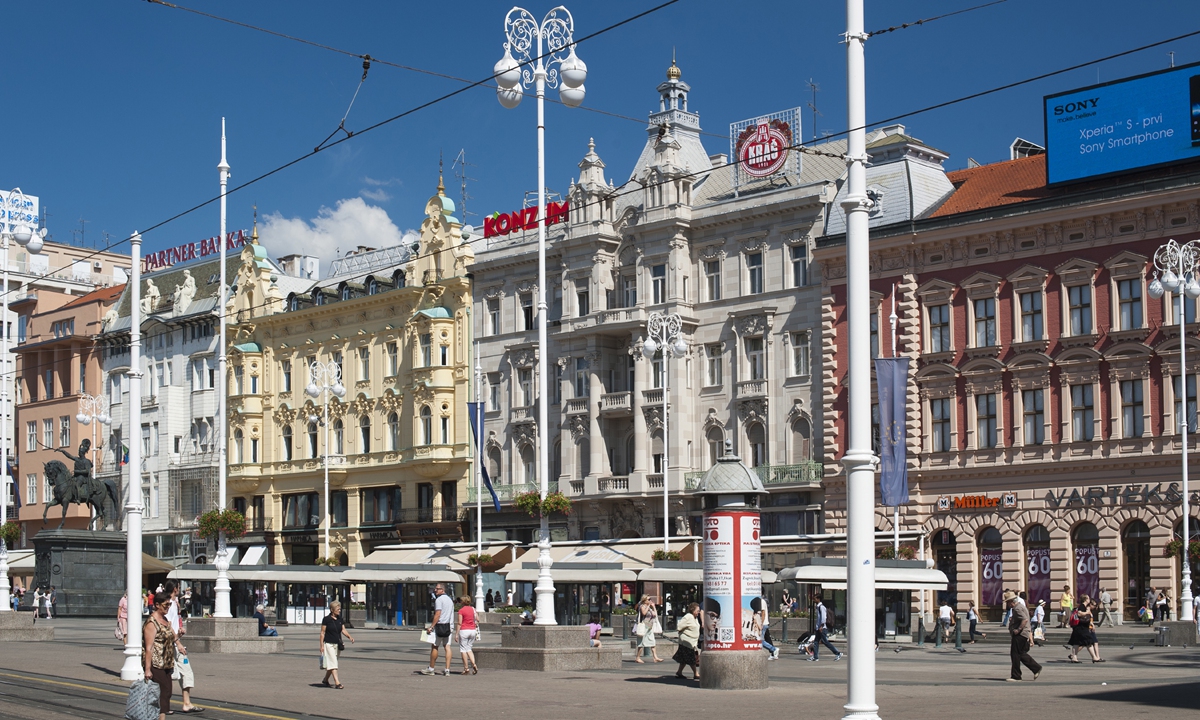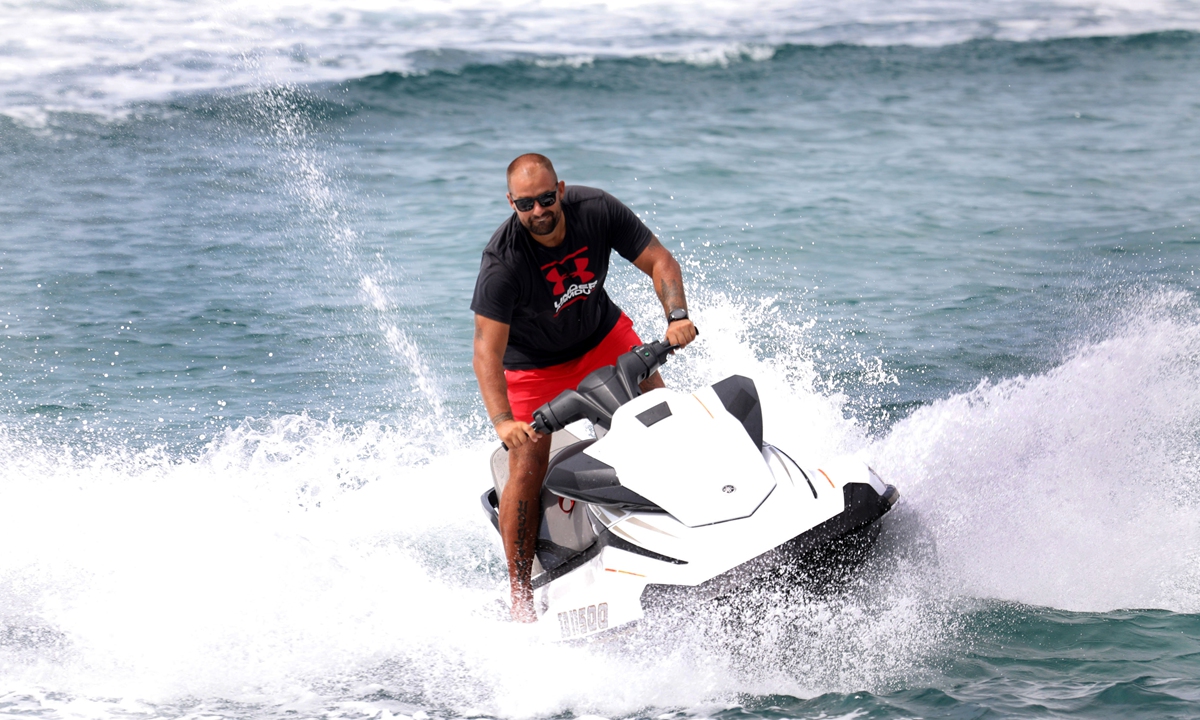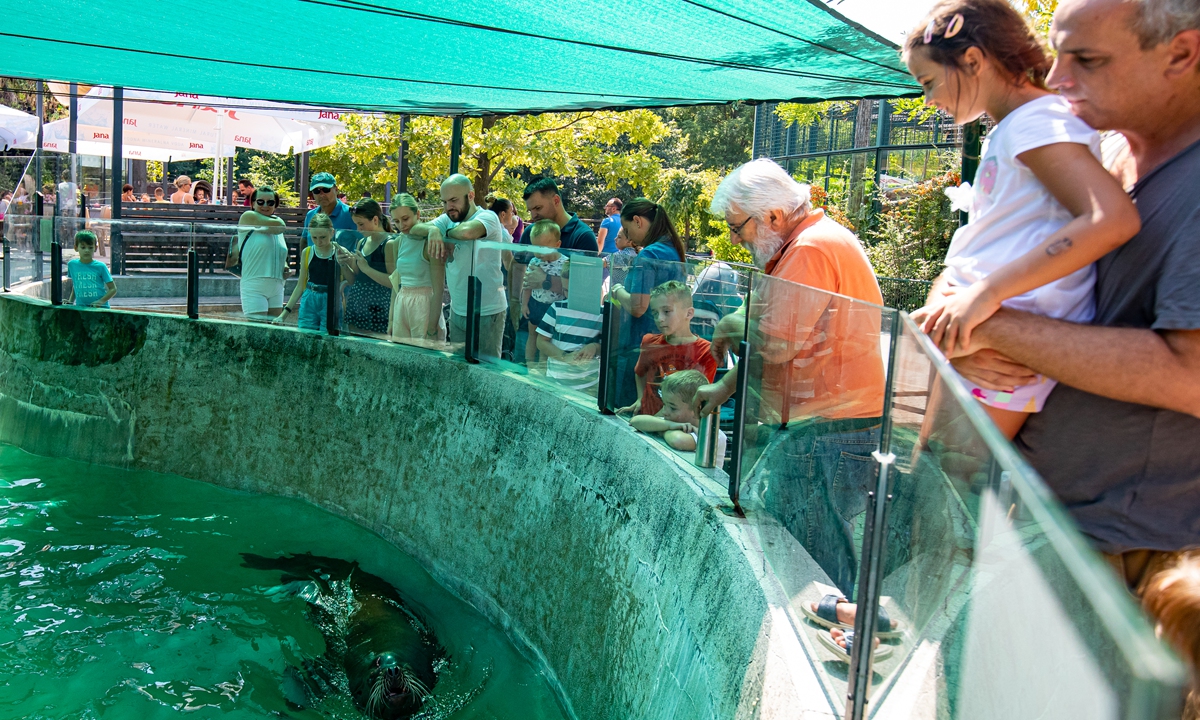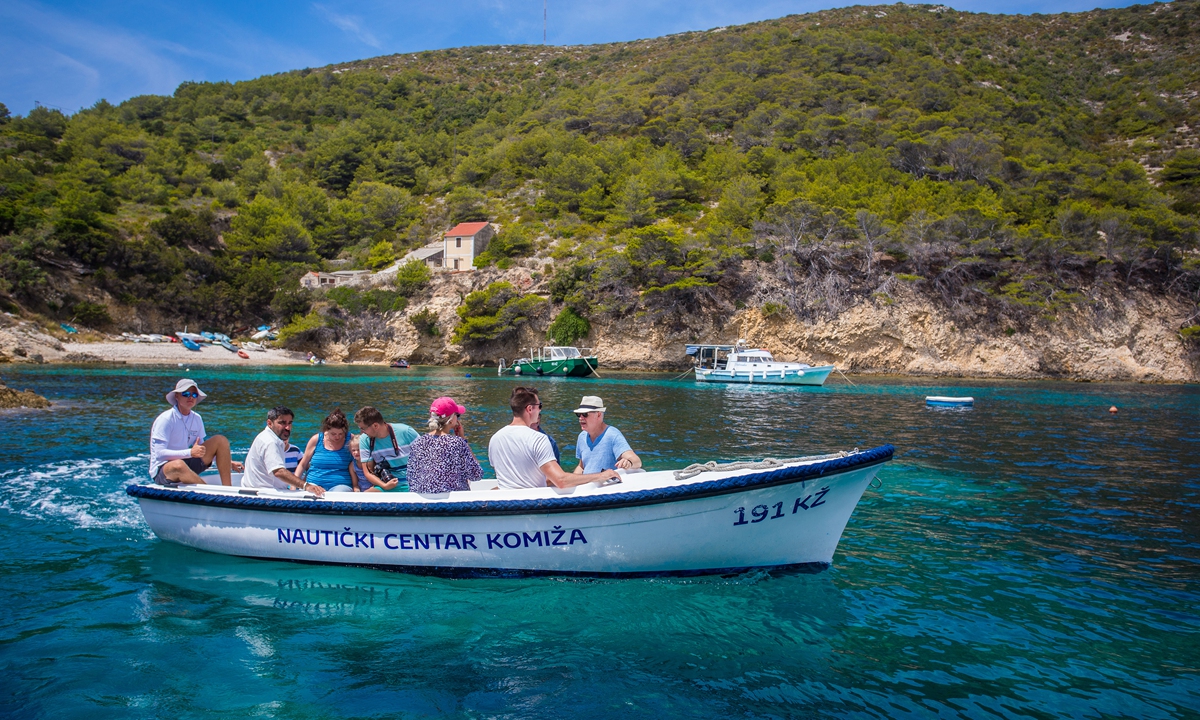
Ban Jelacic Square in Zagreb, the capital of Croatia. Photo: VCG
Renowned for its Mediterranean islands, medieval towns and natural wonders, Croatia, the southeastern European country depending heavily on tourism revenue, suddenly faced uncertain times with no tourists in sight after the onset of the COVID-19 pandemic in early 2020.
"In February 2020, we were booked for almost the entire year," Teo Smrkic, a local tour guide, told Xinhua.
"Our colleagues from Asia were warning us of the problems that the pandemic could bring about, but it seemed impossible that the whole sector could fall apart. When it did, it collapsed in only a few days. All tours were canceled."
For the rest of the year, Smrkic, as well as many other tour guides in Croatia, were out of a job. The Croatian government introduced measures to support job preservation, but still many employees were forced to leave the tourism sector.

A man is jet-skiing in Vodice, Croatia, on August 10, 2021. Photo: VCG
In 2020, the COVID-19 related travel restrictions hit Croatia's tourism sector very hard.
The country logged a mere 7 million tourist arrivals in the year, 64.2 percent less than in 2019. Its gross domestic product (GDP) contracted by 8.4 percent, which was one of the largest in the European Union (EU).
"We were jobless until the summer of 2021. When I saw the first tourist in Zagreb in mid-June last year, I was thrilled that something could finally change," Smrkic told Xinhua.
And it did. The country that is predominantly a summer destination for European holidaymakers expected a tourism boom - again. The summer season of 2021 brought Croatia more revenues from foreign tourists than any summer season ever before.

Tourists visit a zoo in Zagreb, Croatia, on August 8, 2021. Photo: VCG
According to the Croatian National Bank, tourism revenues in July, August and September last year amounted to 6.8 billion euros ($7.7 billion), an astounding 100 percent growth compared to the same period in 2020.
The Ministry of Tourism and Sports said this week that Croatia generated the best tourism results in the Mediterranean with 13.8 million arrivals and 84.1 million overnight stays in 2021. Compared to 2020, this was an increase of 77 percent and 55 percent, respectively.
"This is the result of the dedicated and quality work of all tourism workers who, through their unified effort, quick reactions and coordinated action, have ensured the status of a high-quality, safe and well-prepared destination for our country," the Croatian National Tourist Board told Xinhua.
According to the board, Croatia has been promoting the image of a safe country where the pandemic is under control. The main slogan of the board is "Stay Safe in Croatia" - and not without reason. As soon as vaccines became available, people working in the tourism sector were among the first to receive the shot.

Tourists are visiting the Blue Cave on Bisevo Island, Croatia, on July 19, 2021. Photo: VCG
Moreover, the government offered free COVID-19 tests to all foreigners staying in Croatia.
Clear border crossing protocols with minimal restrictions made Croatia even more accessible and attractive.
Damir Novotny, an economic analyst, explained to Xinhua the reasons behind the recovery of the country's tourism industry in 2021.
"First and foremost, the composition of visitors has changed as tourists from central Europe discovered Croatia again. This year, many Poles, Czechs and Hungarians visited the country," he said.
Before the pandemic, Croatia was a fast-growing tourist destination for visitors from around the world, including from North America and Asia.
In 2019, almost half a million Chinese tourists visited the country.
However, the exponential growth in the number of visitors from non-European countries was abruptly stopped by the uncertainties about air travel and the galloping price increases.
Luckily for Croatia, the visitors from far-away lands were "replaced" by tourists from countries within driving distance, such as Austria, Hungary, Germany or Italy.
Novotny noted that Croatia's COVID-19 measures have been relatively modest and that it is very easy to cross the border and enter the country.
"Croatia's biggest competitor in the Mediterranean is Greece, where 60 percent of the accommodation establishments are hotels. In Croatia, this figure is only 14 percent as most of the offers are private apartments. Due to the COVID-19 pandemic, most people would choose to stay in isolated apartments with their families rather than in hotels to avoid contacts with other guests," Novotny said.
Although Croatia is a predominantly summer tourist destination, many visitors from Europe are currently visiting the country.
Christmas markets were organized in many cities in Croatia and they were all crowded.
Ziglinde Landauer, a tourist from Austria, said that this was the first time she visited Croatia in winter.
"Mostly I come here in summer when I can enjoy swimming in the sea but Croatia is a beautiful country not only in summer but in winter as well," Landauer said.
The Croatian Tourist Board has big plans for 2022. Its goal is to reach 90 percent of the record achieved in 2019 and to further position Croatia as the most desirable and safest destination in the Mediterranean.







